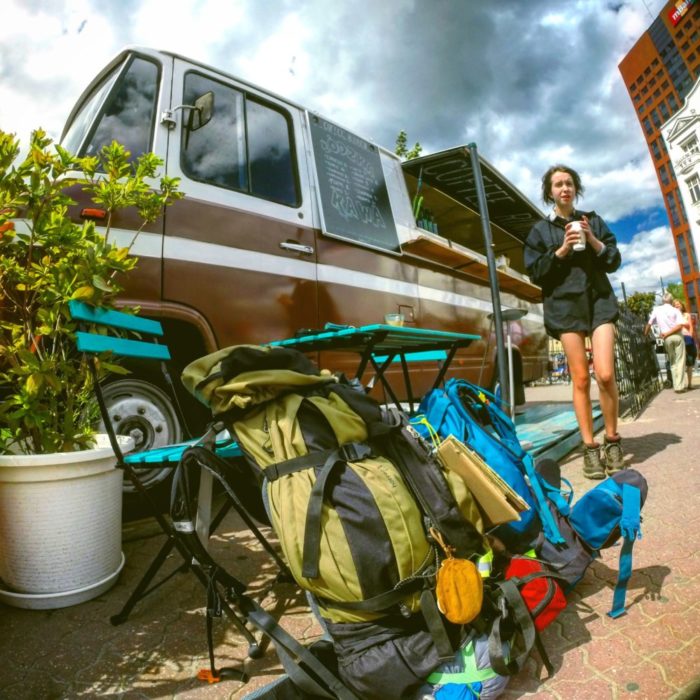
6 Steps to Choosing the Right Backpack
If you’re new to backpacking this coming spring, there’s one very important gear item you’re going to need for your adventure. A backpack. Like most gear items, choosing a backpack can be just as exciting as it is complicated. There are so many brands and types to choose from that you might be wondering how one can ever settle on just one backpack. In some cases, you can’t. Either way, follow these steps to choosing the right backpack.

Know the Different Kinds of Backpacks
The backpack you would use for traveling around Europe might be very different than the one you plan on using for the backcountry. There are day packs, climbing packs, ultralight packs, skiing packs, mountaineering packs, and packs for exploring the wilderness abroad. There are also bags that come with external frames, internal frames, or no frame at all. Know where you’re going, so the backpack you choose is appropriate.
Choose the Correct Size
Backpacks come in all different sizes, as do people. The first thing to know before choosing the right backpack is what will best accommodate your body and the types of trips you plan on going on. A backpack is mainly measured by how many liters it can hold.
20-30 liters: Best for an overnight trip.
30-50 liters: Best for a weekend or long weekend trip.
44-55 liters: Multi-day, up to a week.
55+ liters: An extended trip, 5 days or more.
There are exceptions to the size you’ll choose, like in cases of wanting to do ultralight backpacking. It’s better to always have a little more space, but just as long as the backpack doesn’t weigh so much itself. If you plan on going on trips of different lengths, then you can always go bigger rather than smaller. Or, consider buying different sized bags to have the appropriate size for each trip.

Choose What Fits Your Body
Once you decide the size you need, it’s time to figure out the backpack that’s right for your back. Everyone has a different sized torso of course, and if you go to any outdoor store, they have a special tool that can measure that for you.
Even without measuring, you should be able to tell if a backpack fits you right. Most of the weight should be resting on your hips, and not your shoulders. That means the hip belt should fit snug and supportive across your hips. Additionally, the weight of your bag should be distributed properly, and you will feel some weight on your shoulders. However, it should not be pushing down on you, and should feel even across both shoulders.
Also, the backpack should not go up high above your back. If it looks uncomfortable on you, it will be. Keep in mind, there are also backpacks made specifically for female body types. While a woman should get what fits right for her, it’s worth giving these female specific backpacks a try. Women naturally have wider hips than men, and the manufacturers understand this.

Choose the Colors and Features You Want and Need
This backpack is hopefully going to be with you a long time and go through many adventure with you. While color is certainly not the most important thing to look for in a backpack, don’t settle for a color you don’t like. Many backpack brands come in several colors, so if you like a bag but you don’t like the color, just ask to see if it comes in the one you like.
The features you’ll find are unique to each kind of backpack. When choosing the right backpack, you’re going to want to make sure it has all the features you need and one. This can include the proper frame, easy pack access on the top or front, additional padding, highly adjustable straps, a sleeping bag compartment, pockets in the right areas, workable zippers, attachments for other gear and equipment, a rain-cover, a removable day pack, and the ability to add extra liters at the top or bottom. Of course, these are just a few features to check out.

Make Sure You Can Hold It
Choosing the right backpack will mean nothing if you can’t hold your stuff when it’s all packed. While everything else is important to check, the most practical matter is whether you can carry what you can put inside. It needs to feel right.
Most likely, any good outdoor store will let you pretend to “pack” the backpack you’re interested in and test it out. Or, you can leave the tags on, go home and pack it with what you plan on bringing. If it feels uncomfortable, you might just need an adjustment on the straps, which the store you bought it from can help you with. If it still doesn’t feel right, you might need to unload some stuff, or go back to square one and try again.

Go For a Reliable Brand
There are a lot of brands out there and it’s always a good idea to get a bag that has a good reputation. Brands like Arc’Teryx, Black Diamond, Osprey, North Face, Patagonia, and Deuter are good places to start. If you see a brand you haven’t heard of, it doesn’t necessarily mean it’s not good. Just do your research before you buy. Even the best brands can be known for having their flaws. It’s a good idea to also ask about the warranty with the backpack, in case a problem arises.
The most essential item of backpacking is of course, the backpack. Choosing the right backpack is easy when you follow these steps!













